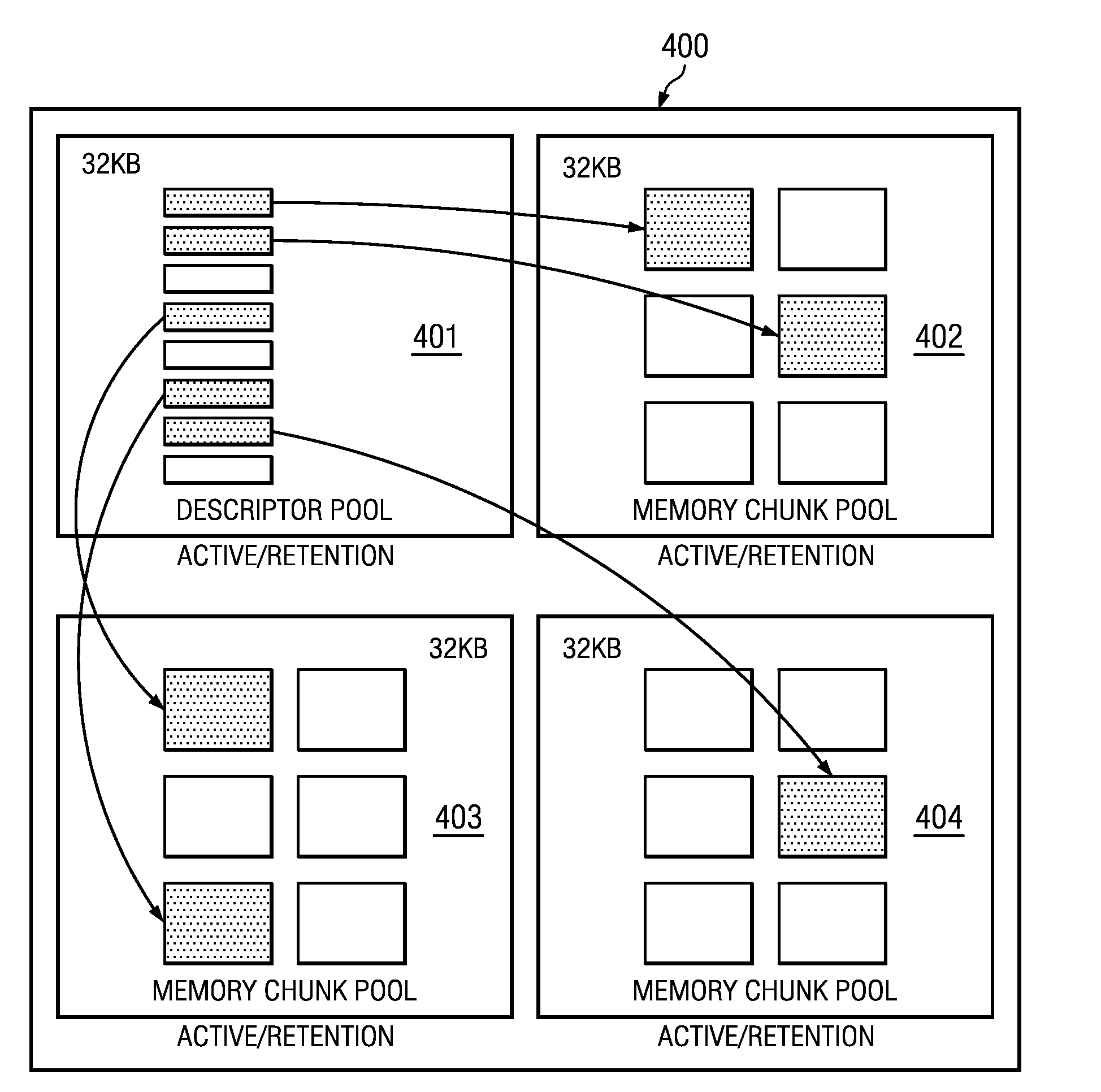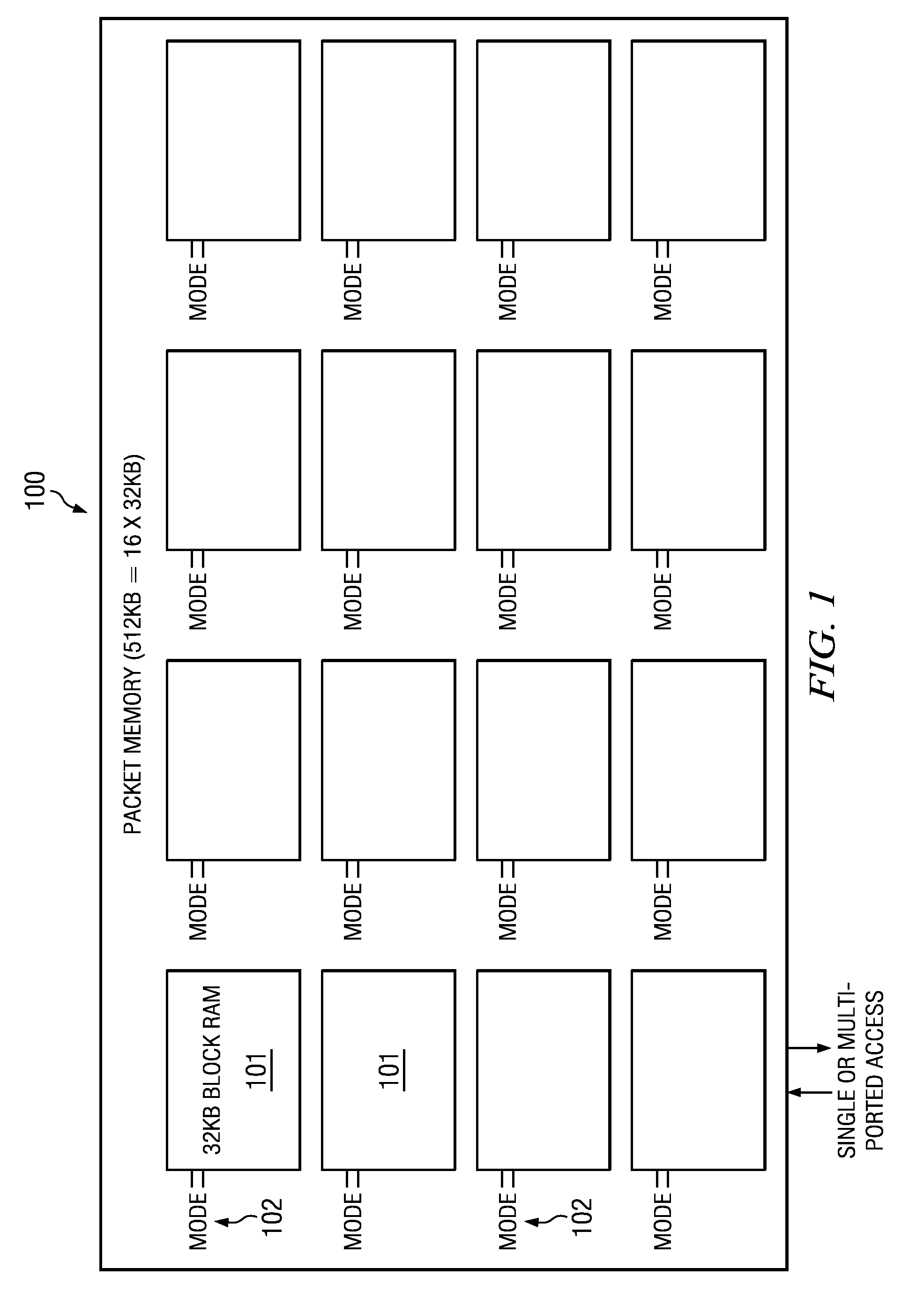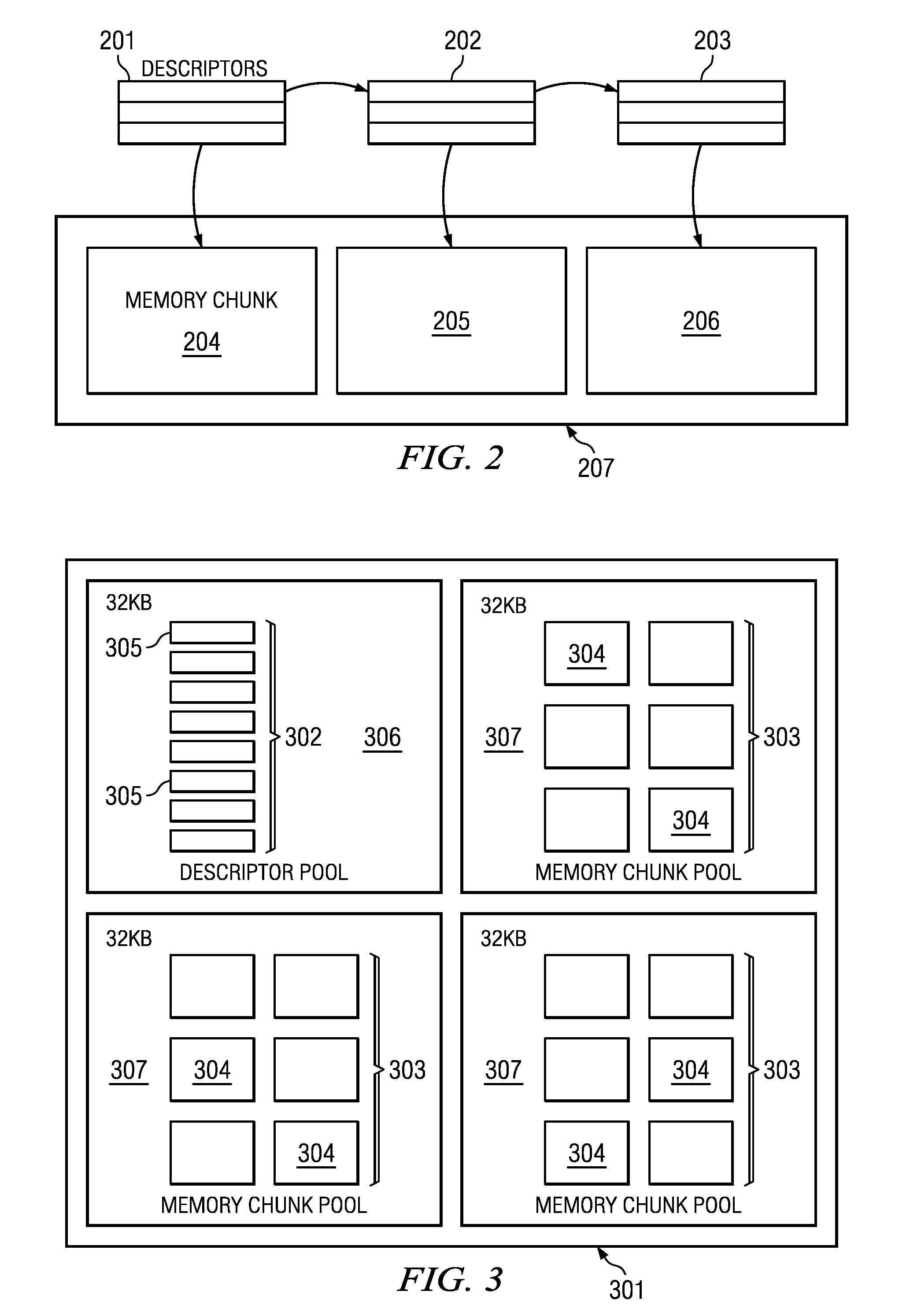Power-efficient memory management for embedded systems
a memory management and embedded system technology, applied in the field of electronic devices, can solve the problem of underutilized storage buffers, and achieve the effect of reducing leakage power, less dynamic power, and still maintaining the same leakage power
- Summary
- Abstract
- Description
- Claims
- Application Information
AI Technical Summary
Benefits of technology
Problems solved by technology
Method used
Image
Examples
Embodiment Construction
[0020]The invention now will be described more fully hereinafter with reference to the accompanying drawings. This invention may, however, be embodied in many different forms and should not be construed as limited to the embodiments set forth herein. Rather, these embodiments are provided so that this disclosure will be thorough and complete, and will fully convey the scope of the invention to those skilled in the art. One skilled in the art may be able to use the various embodiments of the invention.
[0021]Embodiments of the invention provide a memory allocation module that adopts memory-pool based allocation and is aware of the physical configuration of the memory blocks in order to manage the memory allocation intelligently while exploiting statistical characters of packet traffic. The memory-pool based allocation makes it easy to find empty memory blocks. The memory management system then uses the packet traffic characteristics to maximize the number of empty memory blocks.
[0022]...
PUM
 Login to View More
Login to View More Abstract
Description
Claims
Application Information
 Login to View More
Login to View More - R&D
- Intellectual Property
- Life Sciences
- Materials
- Tech Scout
- Unparalleled Data Quality
- Higher Quality Content
- 60% Fewer Hallucinations
Browse by: Latest US Patents, China's latest patents, Technical Efficacy Thesaurus, Application Domain, Technology Topic, Popular Technical Reports.
© 2025 PatSnap. All rights reserved.Legal|Privacy policy|Modern Slavery Act Transparency Statement|Sitemap|About US| Contact US: help@patsnap.com



